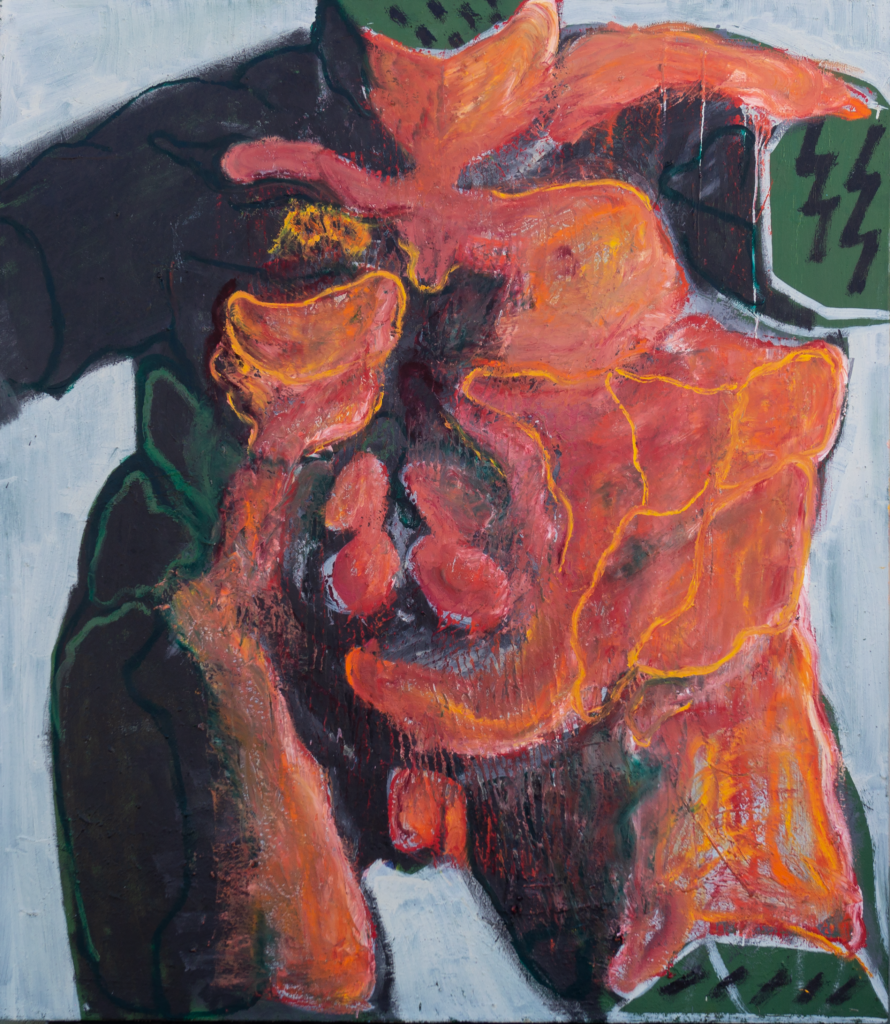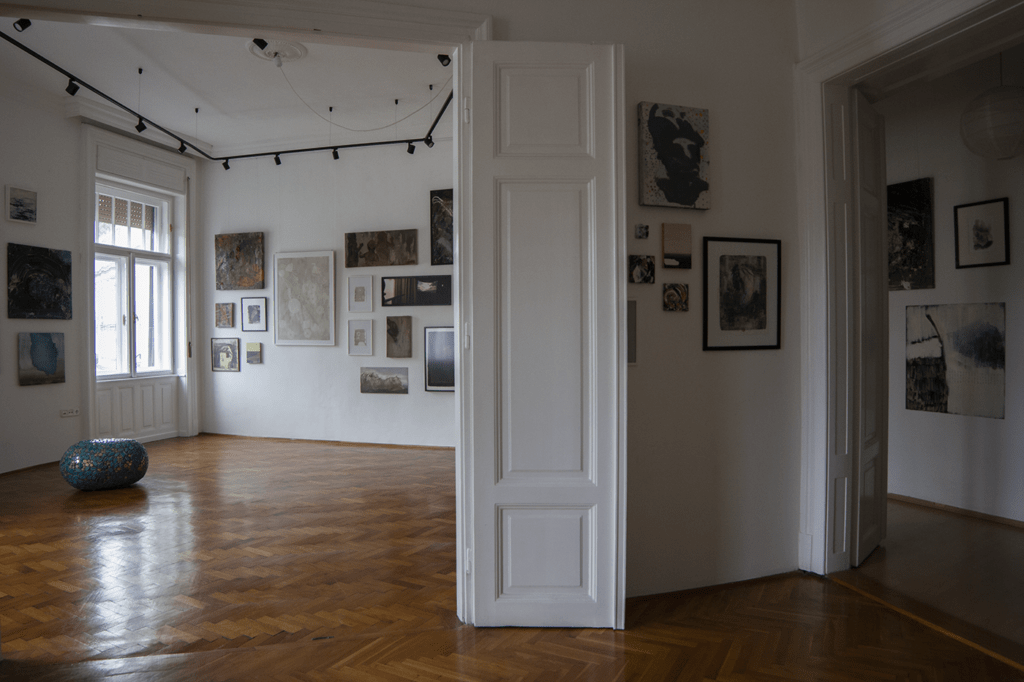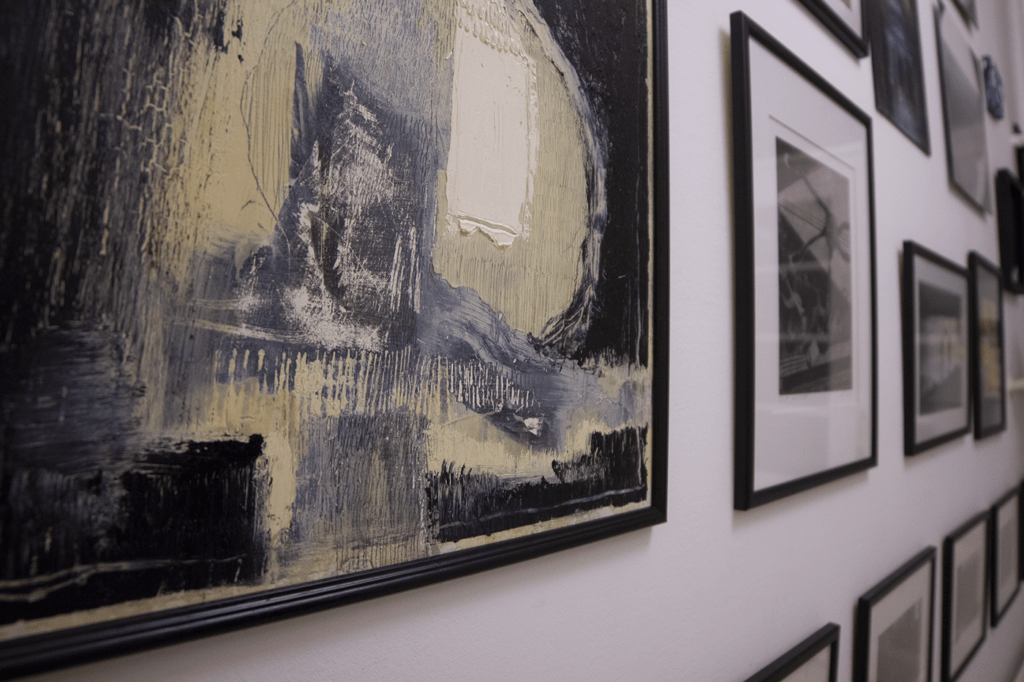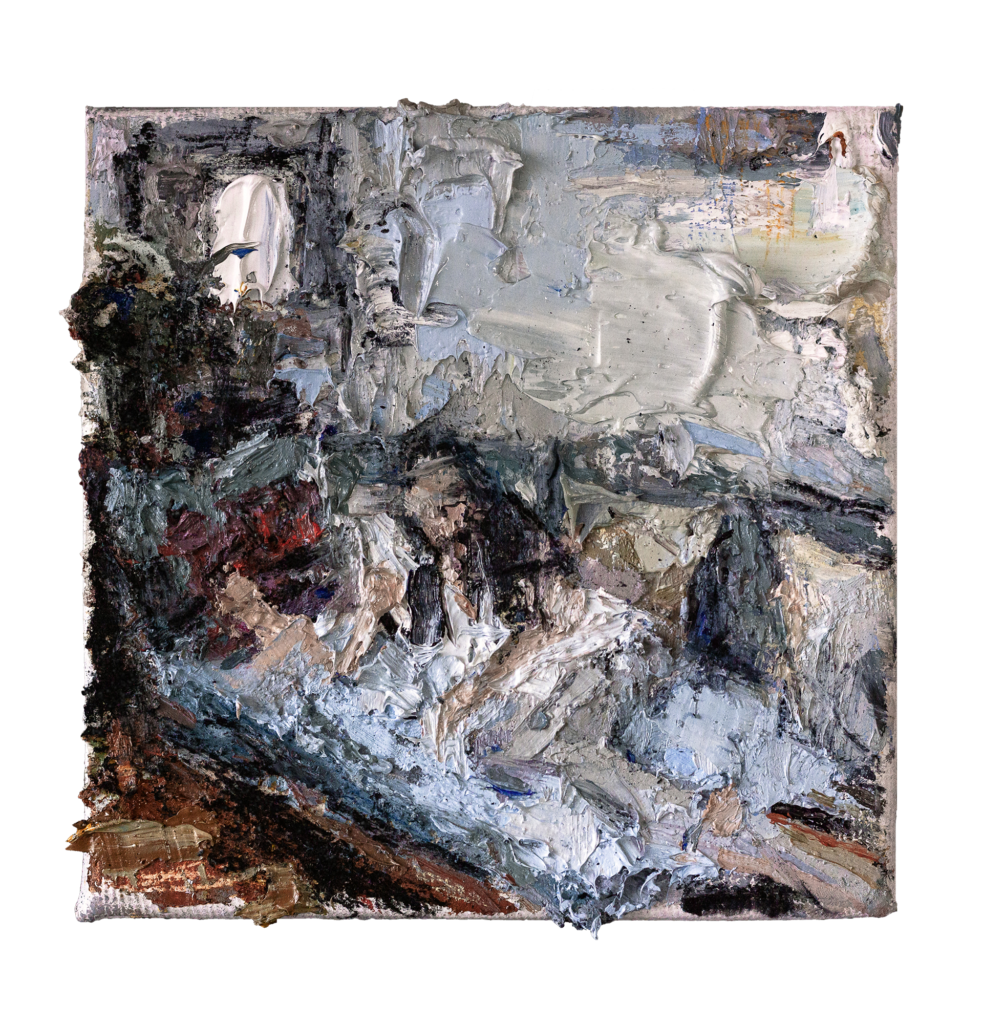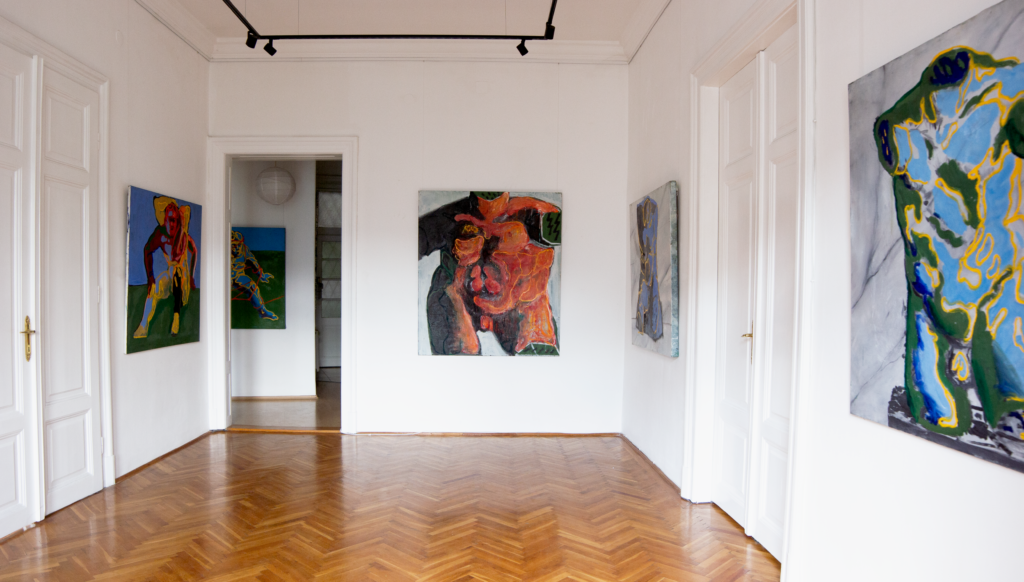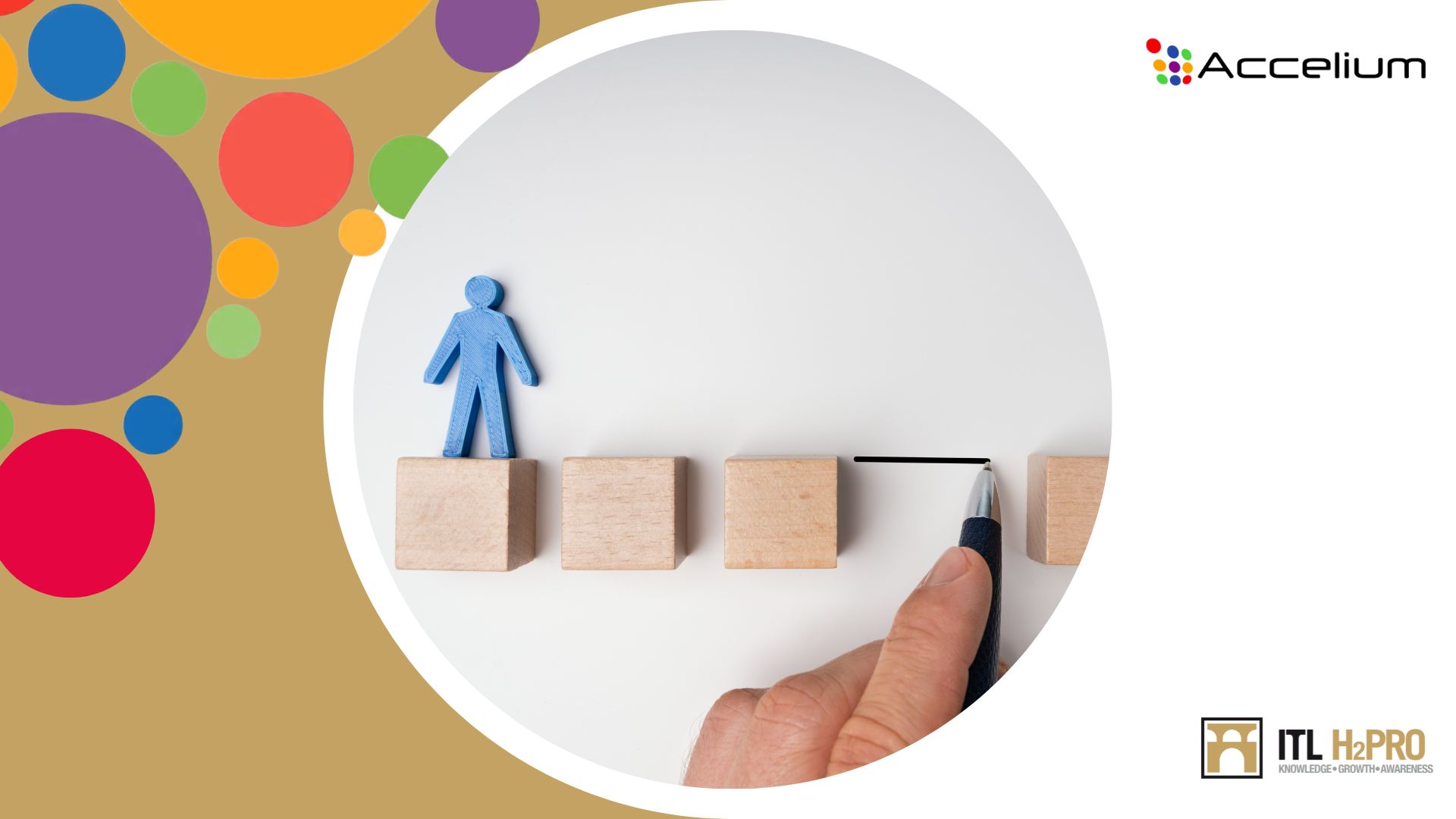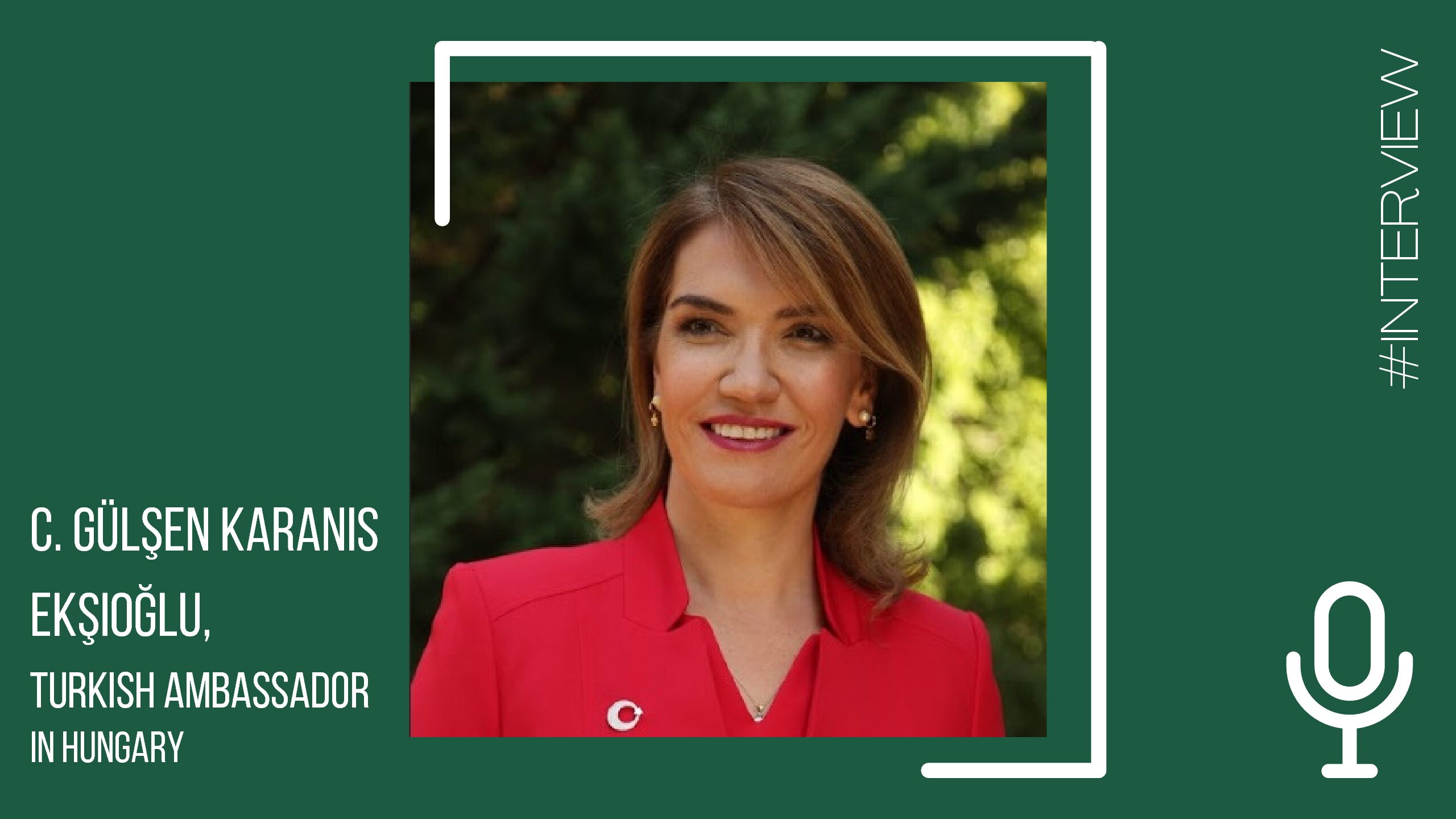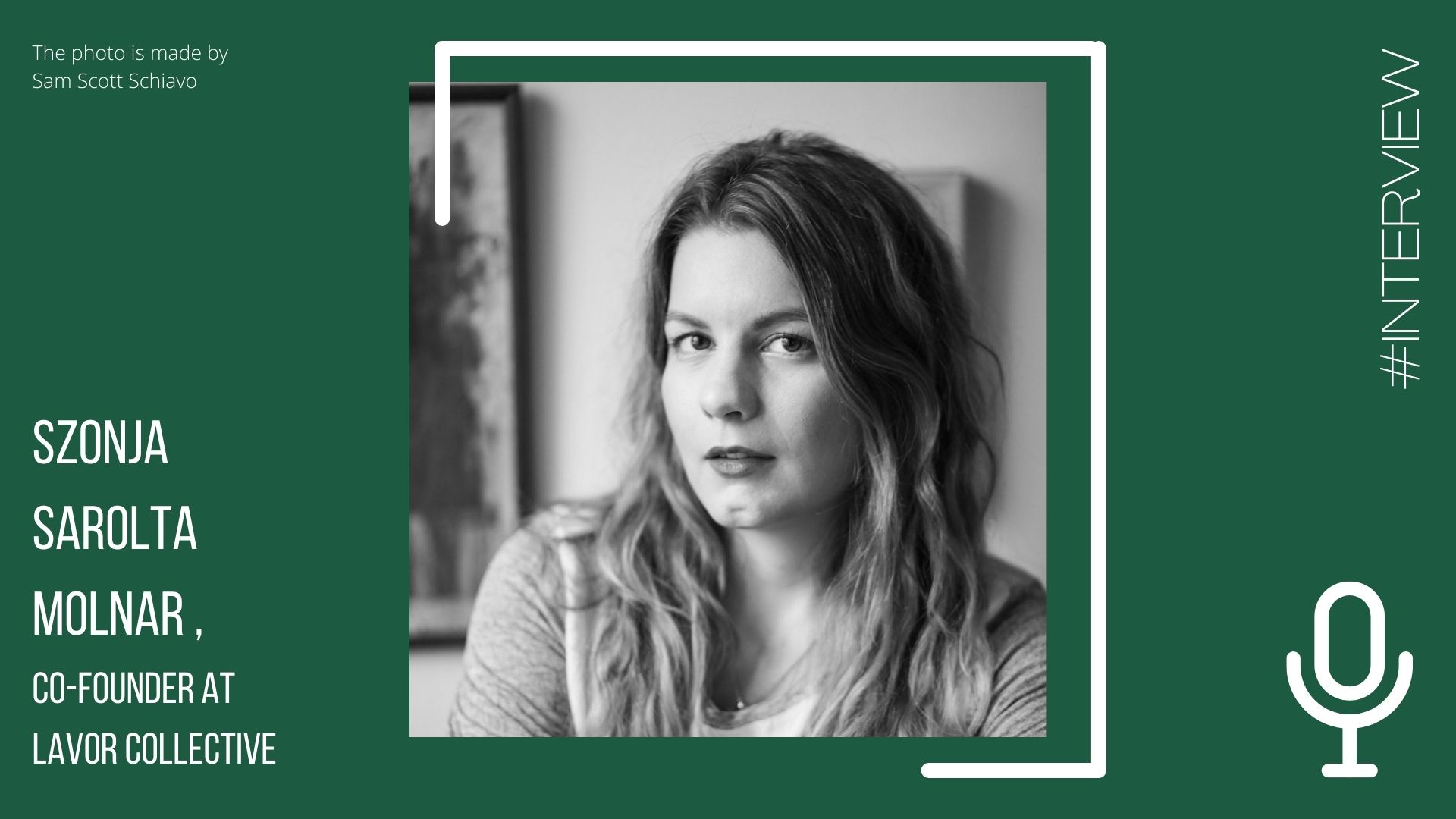
Szonja Sarolta Molnar and her business partner Gabor Zoltan Toth are owners of the art salon and contemporary consultancy “LAVOR Collective”, established in Budapest in 2017. They had a range of successful collaborations, created an engaged and inspiring community; even restrictions due to the pandemic are not obstacles for visitors who prefer to stay in the salon, passing from room to room. We discussed with Szonja about the salon’s pathway from business idea to current realisation, the place of contemporary art in a modern world, the artistic community and price establishment on artworks, and Hungarian artists’ perspectives on the world’s stage.
The path from idea to realisation
Every country, in various ways, has a cast of people not indifferent to art and its development. Often, this kind of passion limits in little gatherings and inspiring conversations of art enthusiasts. “Several questions appeared during an early gathering: “Where are others like us? How to find and unite them to share mutual thoughts, ideas and passion?” – says Szonja: “We realised a collective is really what we want to do – collective of people, collective of artists and art-lovers”. That was the moment when the salon concept was born.
In 2016 the European Union launched the program to support entrepreneurship in Hungary. It provided one year of courses on entrepreneurship basics and 10 000 euros as a starting capital to launch the business. The main criteria to participate were having an idea for the first business in your life, being young, and having a passion for making this idea come true. Szonja graduated from this program, and after one year of diligent work, founded the company. This initial idea, after three years, turned into a “contemporary Art Salon” – a fully-functional meeting point, event venue and contemporary consultancy that opened its doors for artists and audiences in December 2019.
For “LAVOR Collective”, it is important to distinguish the concept of an art salon from the concept of the gallery: “We try to revive the atmosphere of the early twenty century in the sense that we would like people who come here to feel like our salon is their second home, we can talk about everything without boundaries. We inspire people with ideas and thoughts, and it doesn’t matter if their collaborations are not directly connected to our salon; it’s synergy. You can experience an enlightening moment or meet a future life-long friend.”
The name “LAVOR”, which can be translated as “basin” from several Roman languages, had been used during the early XX century to wash faces and hands. “Minimalism is ephemeral, and people would like to express their identity in a more complex manner. Maximalism is a current trend in interior design, and by curating elements, we can unleash our individuality and acquire a deeper insight into our personality. Everything points to complexity; things are becoming more colourful, ornate, and eclectic. There was a range of “neo” styles in art history, but “Neo-secession” had never been. I think this is the next wave: “neo-secessionism”. “Lavoire” means “community washing house” in French, while “lavoro” means “work” in Italian, and we knew from the beginning ‘it will take a lot of time, effort, and hard work to make it happen. We have to do it collectively, with a community mindset” – says Szonja.
What makes LAVOR Collective different
In the beginning, there was a range of artistic collaborations, as well as partnerships through value-in-kind. Therefore, the salon’s modern artistic lighting was provided by the company named “Solinfo” and the furniture by “Basic Collection”.
One of the earliest collaborations was with the pub “Klinika”, and they organised “Seasonal themes” – Winter Mood, Spring Mood, Summer Mood and Autumn Mood, as well as various solo exhibitions. Recently they were participating in Budapest Art Week, which is an innovative cultural festival that showcases the most promising participants of the contemporary art scene in Hungary.

The “LAVOR Collective” team originated a monthly program with a series of events under different thematics that should vary from month to month under the six main formats:
- Live sessions: An intimate contemporary music experience within the walls of an art gallery.
- Picnic: Culinary ecstasy and out-of-body experience. Whether it’s improvisational ethnic or regional cuisine, the focus is the fusion of art and gastronomy.
- Spotlight: Intellectual nap. New perspectives emerge from the living room sofa — shared knowledge from the masters on a variety of topics.
- Workshops: Unleash your creative energies and create something that uniquely yours. Actualise a piece of yourself, don’t worry, we will guide you!
- Artist Talk: Round table discussion differently. We open a bottle of wine and, in the company of movers and thinkers, toss up a theme, sit back and enjoy the synergies of the points of view.
- Microverse: Exhibitions, where you can experience the backstory of the artists and get a deeper insight into their microcosmos.
Imagine The Unimaginable events catalogue.
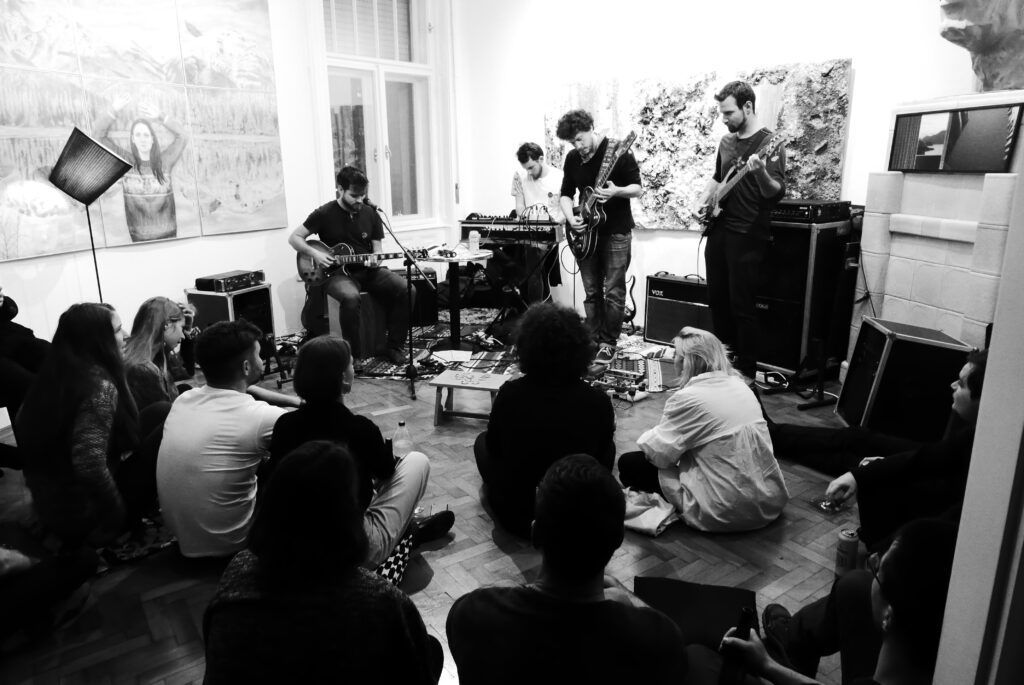
“This program would be the basis of our salon. I believe we cannot just observe the artworks. We can meet with the artists and eat with them; we can enjoy the music together, we can experience the art scene from a totally different angle. Thus, we could show all facets of the art scene,” – says Szonja.
Currently, LAVOR represents a stable of Hungarian and foreign contemporary artists. The selection of artworks hasn’t an approach that can fit within a precise system or guide. Szonja graduated as an interior architect, and Gabor works in the film industry on the technical side. The artistic background, a common mindset, and at the same time, the balance of genders gave birth to a consensus approach towards their artwork selection.
“When we both come to an agreement, then the artist is welcomed. We follow our feelings, and we are very emotion-driven. For instance, we do not care if the artist has an impressive biography or hasn’t exhibited much yet. If we feel that the artwork is meaningful, and we can talk about it, if it makes us think, if it makes us wonder now and will make us wonder later, then we can agree to represent the artist. It is also important for us to get to know the personality of the artist and to be sure that we can maintain a lasting relationship. That is why we are not into conceptual art; we prefer expressive artworks, which makes us feel emotions. It is hard to describe in words, but the feeling has to be intense and grab our attention.”
The contemporary art features also were described by Szonja:
“I believe that the object of art is another dimension, and when somebody visits, I prefer to talk about their feelings, about how they observe the artwork instead of talking about the artists themself. Because the professional artists have a talent to open other gates, open a new dimension to another universe and on the other side you can experience yourself from a different angle, from a different kind of perspective.”
The “LAVOR Collective” had been created to serve as the meeting point to nurture collaborations either for artists, international art galleries or companies interested in integrating art into their activities.
“Art is a form of communication, which is universal”, – adds Szonja.
Therefore, the art salon supports emerging artists, as well as established. Their philosophy is allowing the artists to be as visible as possible, to promote every opportunity, furthering the success of all involved.
The backstage of the Hungarian art scene
There are up to 40 galleries and 50-60 studios, collectives, consultancies, and other art-related companies in Budapest. 10-20 Hungarian galleries regularly attend international art fairs.
In the early stages, searching for the first artists for representation, “LAVOR Collective” made a shortlist of 100 graduates of the Hungarian University of Fine Arts from the past five years. When the consultancy started to contact those people, only a minority had been represented by galleries. Unfortunately, most graduated artists – up to 70% were no longer dealing with art. No opportunity to promote themselves, financial reasons and desire to change direction to a more promising one are mentioned frequently among the reasons.
Szonja has her vision of managing this situation:
“Students are graduating, and they have the diploma evidencing their artistic education. However, those five years in university from the point of a professional establishment is a big gap. Because in order to establish yourself as an artist, to obtain this mindset, the graduate might need a further 10-20 years of experience to develop their own artistic visual communication toolset, and it’s an advantage if you can learn the basics of personal branding.
Nowadays, there are various strategies; for instance, if you are talented, you can easily raise awareness on Instagram or upload your artworks on a variety of art marketplaces. The university does not teach them how to use these tools efficiently or how to deal with them at least. We need another institution that could serve as the transition point, the bridge between university and success. A young artist cannot survive without external support in this period.
In “LAVOR Collective”, when a new artist joins us, we discuss personal branding and promotion on social media. We take the photos of the artworks; we prepare all the reproductions, create the portfolios, write the personal bios. We try to give all possible support that we can. Unfortunately, we are not an institution to support all of them.”
The price of the Hungarian contemporary art compared to the International art scene
The Hungarian contemporary art market is currently characterised by dynamic trends. After the transition from the communist-socialist regime, it has grown from almost nothing to an internationally recognised art field. For instance, 2019 had been a breakthrough for living artists on multiple levels, resulting in a surge in demand and prices.
However, even if the most significant Hungarian artists’ prices have increased 10-100 times over the past 20 years, there are still substantial gaps between Hungarian emerging artists’ prices compared to the same level artists from other European countries and America. Not all established Hungarian artists increased their prices on the appropriate level.
Another particular situation in the Hungarian art market is that old masters’ works are more expensive than paintings of well-established contemporary artists. Although the situation abroad is exactly the opposite. Contemporary art admirers pay up to 10 million forints (~30 000 euros) for the works of Imre Bak and Janos Fajo; the most booming Hungarian contemporary artist is Istvan Nadler, and his paintings are at the prices of 10-20 million forints (~30 000 – 50 000 euros). At the same time, auctions sell artworks of old Hungarian masters for starting 75 to 150 million forints (~200 000 – 400 000 euros).
Consequently, being restricted by these borders, emerging Hungarian contemporary artists’ prices cannot be higher.
“The painting for which in Hungary we could not ask more than 1,2 million forints (~3300 euros), on the online platforms like artsy.net, upriseart.com, theartling.com, where they showcase a curated selection of artworks, pieces can be sold with the price of 10 000 euros. For the past four years, I monitored thousands and thousands of works; I checked artists’ profiles, bios, and other parameters that influence the price range. So I can confidently say that there is no difference for the aspiring Hungarian artists, and they are easily worth more”, – explains the owner of “LAVOR Collective”.
Considering all these aspects, when an aspiring artist decides to exhibit in their salon, Szonja and Gabor try not to reduce the artist’s price. “I usually ask the artists about how much they would ask for their work, and I do not like to push down their price because I believe that emerging artists should be recognised for their appropriate value, but my final estimation will always be based on market value.” – adds Szonja.
Investment in emerging artists as an opportunity
The prestige of contemporary art is growing, and every year a wider audience starts to consider it as a serious and reliable investment. Despite all concerns, during the pandemic of COVID-19, the confidence in investing in art is unshakable and offers one of the most stable investment opportunities. For instance, the market of contemporary art demonstrated an apparent increase fueled by the fact that it has been able to adapt most quickly to the conditions of the auctions and sales shifted to the online space.
Several Hungarian artists’ already achieved significant international success. However, as we see, it is just the realisation of a small part of the country’s total potential. Considering it now is an outstanding opportunity for potential investors and art-lovers in the long term.
In conclusion, Szonja shared her vision on the future of art merging with the corporate world.
“The companies should become patrons of art in the XXI century. The cultural background of the modern business environment and the people in it now is advanced. I believe the corporate social responsibility culture could push the companies to support artists, galleries, and even institutions.
There are several reasons and bilateral benefits for that:
- Art collection is an asset, a good investment that will not lose its value and instead, it will most likely increase.
- Case studies show that decorating the work environment with the help of artwork boosts creativity and relieves stress. This challenging period will pass, and as soon as possible, we will return to our normal life. Therefore, buying artworks could be a good way for companies to refresh their interior spaces and be ready to welcome employees in their offices, which can feel like a totally renewed environment, thanks to the artworks.
- For organisations, it is also the way towards sustainable brand communications. In the next decade, with the modern pace of technology development, the current focus on soft-skills will only increase; we would need to improve them in order to remain competitive. Art is a universal language, and this is the language that is always worth learning”.
About the current exhibition
Newborn: Solo exhibition of Endre Kecső
Ancient mythology, with its elements embedded in our collective subconscious, preserves its memories with its stories and the mythical and spiritual traditions that live in us until today without geographical limitations that define our basic human nature. They remind us of our nature, our limitations and the potential that we have, beyond which we can transcend our imaginations.
Endre is a lover of these ancient tales, from which he not only drew inspiration but he also rephrases them using visual means. His artworks are attempts to revive antique traditions and mould them into new shapes. How can we relive a thousand-year-old story, and how can we inherit the patterns that still live in us today according to contemporary traditions?
It’s included in the material of this exhibition as a recurring element, on the one hand, the golden thread of Theseus, which helped him to exit the maze. The topicality of the story could not be more timely, as we all currently live together in our own microcosms. On the other hand, experiments with torsos are painting transcripts of sculptural traditions that indeed evoke a final state, bodies enclosed in a double-time loop represent the limits of ourselves and our environments’ constraints using matter and contours, thus spurring the viewer to contemplate the relative state of time.
The exhibition may raise several questions for the observer, thus creating an opportunity to move on to another dimension: How can we adjust to a situation that is out of control for everyone? How much do we really have the ability to control our lives? To what extent do coincidences define our destiny? What is our relationship to fate? What life strategies do we use to survive? Is there a way out? And if so, where and how should we proceed?
The exhibition can be viewed by pre-registering in the Art Salon from 03/19/2021 to 09/05/2021 on the following e-mail contact@lavorcollective.com and mobile +36308477913.
Article written by Asselya Sekerova

